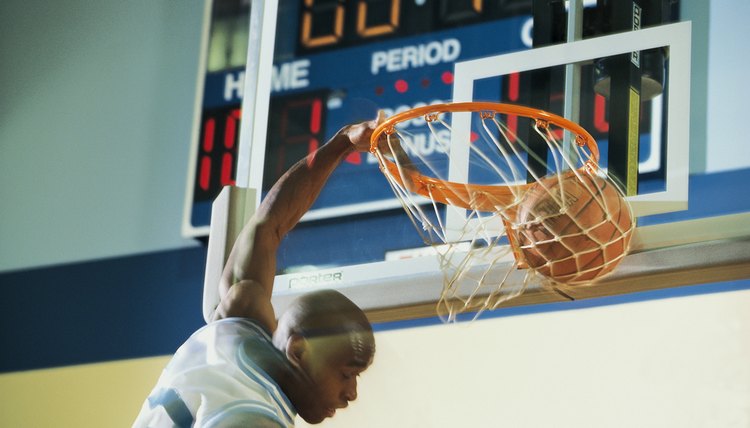How to Read a Basketball Box Score

Basketball box scores are fairly straightforward. Statistics for each participating player are presented in an easy-to-digest format. The key to comprehending the box score is understanding each statistical category and knowing its abbreviation.
MIN (Minutes)
In a complete box score, the minutes-played column can be right next to each player's name or it can be the last column to the right. The minutes calculation is rounded out to 30 seconds either way. So if a player played 23:12, that is recorded as 23. If a player played 22:48, that is recorded as 23. A player who plays less than 30 seconds gets a 0 or 0+. Players who do not play typically get a "DNP" designation.
FGM-A (Field Goals Made and Attempted)
This includes all shots made and legitimately attempted from the floor, both two-point shots and three-point shots. A shot missed when a shooting foul occurs does not count as an attempt. Made shots include those awarded to the shooter because of defensive basket interference. Individual and team field goal percentages are derived from these totals.
3PA-M (Three-Point Shots Made and Attempted)
These numbers include three-point shots made and attempted, under the same guidelines as two-point shots. Individual and team three-point field goal percentages are derived from these totals. These makes and attempts are also included in the overall field goal made/attempts category. They are part of the overall field goal percentage.
FTM-A (Free Throws Made and Attempted)
These are all the shots made and attempted at the free throw line, either for personal fouls or technical fouls. Individual and team free throw percentages are derived from these totals.
OREB (Offensive Rebounds), DREB (Defensive Rebounds)
Players get a rebound for gaining control of a missed field goal or free throw attempt. Offensive rebounds are those gained while on offense. These can be clean rebounds or controlled tips at the basket. Defensive rebounds are gathered or controlled at the defensive end. Some box scores will include a separate column for offensive rebounds, but not for defensive rebounds. In that case, subtract the offensive rebounds from the total rebounds to get the number of defensive rebounds.
REB (Rebounds)
These are the total rebounds credited at both ends of the court. In some cases "team rebounds" may be awarded when no one individual controls the missed shot.
AST (Assists)
Players earn an assist for making a pass that leads directly to a teammate's made basket. Merely being the last teammate to possess the ball before the shooter scores does not qualify you for an assist.
STL (Steals)
Players get a steal for taking away an opponent's dribble or intercepting a pass to give their team possession of the basketball.
BLK or BS (Blocked Shots)
Players get a blocked shot for clearly rejecting or deflecting a legitimate field goal attempt. This counts as a block even if the defensive team does not recover the ball. NBA box scores include a stat for "BA" which stands for "block against" meaning how many of that player's shots were blocked.
TO (Turnover)
Players most commonly earn turnovers for losing the ball while dribbling, committing a ballhandling violation, throwing an errant pass or earning a charging foul while possessing the ball.
PF (Personal Fouls)
A personal foul is a physical foul committed on the court. On some levels, a technical foul -- usually assessed for unsportsmanlike conduct of some kind -- also counts as a personal foul for the offender. Technical fouls are usually delineated as a line item at the bottom of the box score. Flagrant fouls are severe personal fouls that draw extra punishment. These count as personal fouls, but are also registered as a line item under the box score.
+/- (Plus-Minus)
NBA box scores include individual plus-minus ratings, reflecting the game's point differential for each player's time on the court. If your team outscores your opponent by 12 while you are playing, you get a plus-12. If your team is outscored by seven while you play, you get a minus-7.
References
Writer Bio
Jeff Gordon has been reporting and writing since 1977. His most recent work has appeared on websites such as eHow, GolfLink, Ask Men, Open Sports, Fox Sports and MSN. He has previously written for publications such as "The Sporting News" and "The Hockey News." He graduated from the University of Missouri-Columbia School of Journalism in 1979 with a bachelor's degree.
